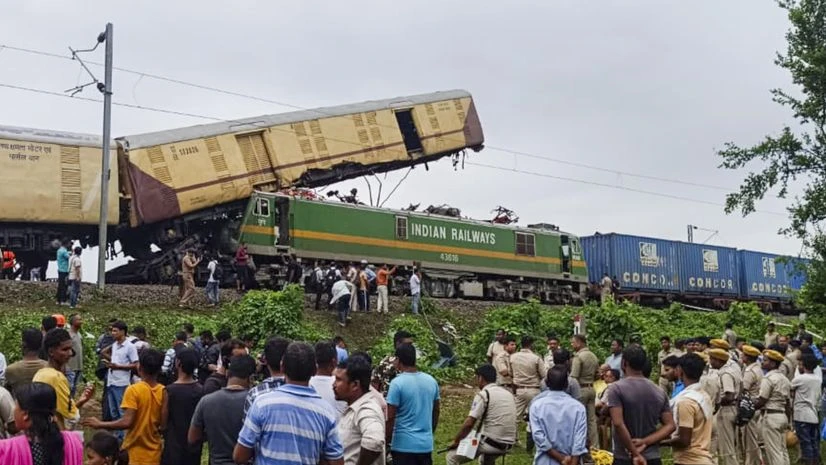At least 15 lives were lost and over 60 passengers injured when a goods train collided with the Kolkata-bound Kanchanjunga Express in Darjeeling on Monday. Shockingly, the ‘Kavach’ safety system, designed to prevent such accidents on shared railway lines, was not yet operational in this region.
A viral video of Railway Minister Ashwini Vaishnaw explaining the capabilities of Kavach has sparked renewed scrutiny. Despite ambitious plans, officials revealed that Kavach is still pending installation across much of India's extensive rail network.
“The Railways plans to deploy the safety system on the Delhi-Guwahati route under its goal to cover over 6,000 km of tracks by next year. Bengal falls within the 3,000 km of tracks set to be protected by Kavach this year. The system will be applied to the Delhi-Howrah route,” Jaya Varma Sinha, Chairman of Railway Board, was quoted as saying by NDTV.
Currently safeguarding 1,500 km of tracks, Kavach was slated to expand to 2,000 km in the 2022-23 fiscal year, with plans to eventually cover 34,000 km of the Indian Railways network, which spans over 1 lakh kilometres.
“If Kavach was deployed, something like this accident could likely be avoided. However, it’s a costly system to operate,” former executive director of the Railway Board Prempal Sharma told NDTV.
Let's take a look at what Kavach is and how does it work?
More From This Section
What is Kavach?
Kavach, an Automatic Train Protection (ATP) system developed domestically by the Research Design and Standards Organisation (RSCO) in collaboration with three Indian firms, aims to enhance railway safety.
The system not only regulates train speeds but also aids locomotive drivers in detecting danger signals, ensuring safe operations even in adverse weather conditions.
How does Kavach work?
Kavach functions by automatically braking trains if the driver fails to respond promptly. It employs RFID (Radio Frequency Identification) tags placed on tracks and station yards to identify track positions and train directions. When activated, trains within a 5 km radius halt to allow safe passage of adjacent trains.
The On Board Display of Signal Aspect (OBDSA) enables locomotive pilots to view signals even in poor visibility conditions, reducing reliance on manual visual checks.
In a successful test highlighted by Union Railway Minister Ashwini Vaishnaw in 2022, Kavach demonstrated its capability to prevent rear-end collisions, automatically halting a locomotive just 380 meters from another in front.
Shri Ashwini Vaishnaw @AshwiniVaishnaw
— South Central Railway (@SCRailwayIndia) March 4, 2022
Hon'ble Railway Minister briefs during live testing of #kavach automatic train protection technology in Lingampalli - Vikarabad section, South Central Railway #NationalSafetyDay @RailMinIndia @drmsecunderabad pic.twitter.com/jtW5EXECm3
Moreover, the system facilitates emergency communication, relaying SoS messages during critical situations.

)
